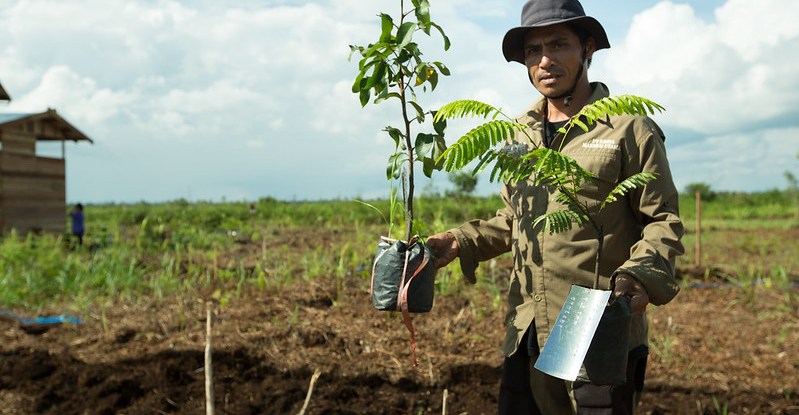|
Getting your Trinity Audio player ready…
|
Assisted natural processes are a recipe for success
With all those well-meaning efforts to plant trees out there, the alarm is justifiably being raised that sometimes, those trees will do more harm than good.
That’s why it’s helpful to start any tree project with the thought that the objective is to “regenerate with trees” or “restore with trees,” rather than “planting trees” or even “growing trees.” After all, the objective of most such projects is some form of regeneration, if only of the atmosphere (by pulling carbon from it).
Once you start to think of what you are doing as restoring land with trees, your approach will almost magically change. Your foundational step will become something called ANR or FMNR, i.e. assisted or farmer-managed natural regeneration, which puts a proportion of the original perennial biodiversity back into the landscape.
The next step will be to add companion planting, because much of the world is now so degraded that the seedbank remaining in those lands is unable on its own to re-establish the original perennial biodiversity there (or something that approximates it, to be accurate).
That is not a trivial challenge. Sourcing enough of the right seeds, with enough genetic variability, and growing them into healthy trees is hard, and a key reason why many tree planting projects go for the easy solution of sourcing and planting lots and lots of seedlings of the same variety of the same species. That’s rarely a good idea — an oil palm plantation is a tree plantation too, after all. If you want to do it right, call us. We’ve got the science – and the team.
So, first regenerate, then be careful about what you plant.
And that applies in a surprisingly large number of cases. Not just in degraded woodlands, for example, but also to farmland and large swathes of pasture or grasslands.
Think of the Sahel or the east African savannah: these are not landscapes that were historically devoid of trees. On the contrary, they host a large number of tree species that are adapted to these conditions. Many have reproductive cycles that suggest that they coevolved with herbivores, large or small. Most have thorns, for similar reasons. Similar ecosystems dominate vast areas of Asia and Latin America, as well.
Pure grasslands almost devoid of trees seem to be something that exists mostly in the arid temperate and subarctic zones of the inner parts of large continents. It is difficult to judge that accurately, because the plant community in a given biome is also the result of interactions with herbivores, and since humans drove dozens of genera and hundreds of species of megafauna to extinction in the last 30,000 years, we must rely on archaeological evidence, models and modern analogues, such as holistically managed ranch land, to try to understand what is going on.
As you regenerate land through assisted natural processes and add carefully selected tree species through companion planting, don’t forget the last step: ensure that animals — grazers, browsers, and their predators — are reintroduced, too. They will boost ecosystem functions, trophic cascades and the nutrient pump. Poo is your friend, especially on cropland.
Those herbivores and predators can be wildebeest and lions, or tapir and jaguar, of course. But most often, they will be livestock and humans. If the humans manage the livestock well, these treed landscapes will regenerate, and their soils will grow fat with carbon, whether they’re pastures or farmland.
The bonus of this approach is that it can adapt perfectly to the farmers and herders already occupying your target landscape. You don’t have to kick them out as you would from a tree plantation.
And so, instead of your project becoming a biodiversity-destroying plantation of a single tree variety that will be a social injustice and perhaps even damaging to the climate, you will have achieved a multiplicity of beneficial objectives.
Your target landscape will suck up enormous amounts of carbon, its biodiversity will blossom, and the people living there will be proud of maintaining it that way.
